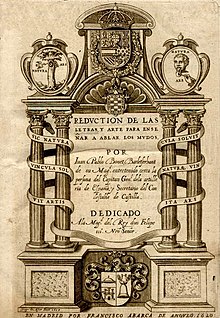User:Xhyljen/RomanianSignLanguage
Romanian Sign Language
[edit]There are currently no official statistics on the number of people who use or know sign language, but according to our official statistics published by the National Association of Surzilor of Romania in Romania there are over 30,000 deaf people, deaf-mute and hypo-accused who know and use sign language. Cite error: A <ref> tag is missing the closing </ref> (see the help page).
Limbajul semnelor în România
[edit]Nu există în momentul de faţă nici o statistică oficială cu privire la numărul de persoane care folosesc sau cunosc limbajul semnelor dar conform unor statistice ne-oficiale publicate de Asociaţia Naţională a Surzilor din România în România există peste 30.000 de persoane surde, surde-mute şi hipo-acuzice care ştiu şi folosesc limbajul semnelor.[1].
Singura istituţie care se ocupă de limbajul semnelor (limbajul mimico-gestual) ţi care editează un dicţionar este Asociaţia Naţională a Surzilor din România.
Note
[edit]
Legături externe
[edit]Asociaţia Naţională a Surzilor din România
Asociaţia Mondială a interpreţilor de limbajul semnelor
'Sign language' (or sign language) is a language of expression and natural gestures configuration-space and visual perception that sudo-moving person can establish a channel of communication with the social environment, whether deaf people who know the language or anyone who knows sign language. While communication channel is the voice for speech-hearing, sign language is transmitted on a channel-gestual vision.
Origin language signs
[edit]Although sign language is now used almost exclusively for deaf people, its origin is as old as the oral language, or even older history in the emergence of humanity, and was and still is used by communities heard.
In fact, most groups amerindienii regions in North America, they used sign language to understand, speak different languages, with fonologii very different. Language was used even after the European conquests.
Another case, also American, was on the island of Manhattan's single family in which a large number of members were surdzi as a result of a gene dominant inheritance, and communicate with sign language. A similar case took place on the island of Martha's Vineyard south of the Massachusetts, in this case, given the number of employees as a deaf using sign language was generally used as the language of voice, to early twentieth century.
Despite this, there are references to these languages before the seventeen century century.

In the year 1620 Juan Pablo Bonet published book Reducción de las letras y arte para enseñar a hablar a los mudos, such a treaty was the first modern phonetic and logopedie, in which he proposed a method of oral education for deaf people, using a alphabet gestual pre-determined spread throughout Europe and then throughout the world, the manual sign language, for better communication with deaf and dumb.
Language signs in Europe
[edit]There are no statistics on the number of users of sign language European Union, but Eurobarometer survey conducted in 2001 indicated that 0.2% of respondents knew the language of signs. If you extrapolate this result to the EU would mean that there are about 900 000 people who communicate through sign language. It is possible however that these figures do not accurately reflect reality, because of small sample sizes examined. According to other estimates, a person in a thousand uses as a first language a national language of signs - this would mean around 500 000 Europeans. Sign language can be used by deaf people (for whom this language could be the mother tongue), and persons with hearing deficiencies, friends and relatives and other people (for which this language is a second or third language). <ref> Europa.eu </ ref></includeonly>
